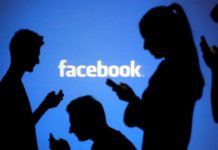Evidence Found for a New Fundamental Particle
Natalie Wolchover
An experiment at the Fermi National Accelerator Laboratory near Chicago has detected far more electron neutrinos than predicted — a possible harbinger of a revolutionary new elementary particle called the sterile neutrino, though many physicists remain skeptical.

Physicists are both thrilled and baffled by a new report from a neutrino experiment at Fermi National Accelerator Laboratory near Chicago. The MiniBooNE experiment has detected far more neutrinos of a particular type than expected, a finding that is most easily explained by the existence of a new elementary particle: a “sterile” neutrino that’s even stranger and more reclusive than the three known neutrino types. The result appears to confirm the anomalous results of a decades-old experiment that MiniBooNE was built specifically to double-check.
The persistence of the neutrino anomaly is extremely exciting, said the physicist Scott Dodelson of Carnegie Mellon University. It “would indicate that something is indeed going on,” added Anže Slosar of Brookhaven National Laboratory.
As for what, no one can say.
“I’m very excited about this result, but I am not ready to say ‘Eureka!’” said Janet Conrad, a neutrino physicist at the Massachusetts Institute of Technology and a member of the MiniBooNE collaboration.
The existence of a sterile neutrino would revolutionize physics from the smallest to the largest scales. It would finally break the Standard Model of particle physics that has reigned since the 1970s. It would also demand “a new standard model of cosmology,” Dodelson said. “There are other potential cracks in the standard picture,” he added. “The neutrino paradox could point our way to a new, better model.”
Neutrinos are tiny particles that pass through our bodies by the billions each second but seldom interact. They constantly oscillate between three known types, or “flavors,” called electron, muon and tau. The MiniBooNE experiment shoots a beam of muon neutrinos toward a giant oil tank. On the way to the tank, some of these muon neutrinos should transform into electron neutrinos at a rate determined by the difference in mass between the two. MiniBooNE then monitors the arrival of electron neutrinos, which produce characteristic flashes of radiation on the rare occasions when they interact with oil molecules. In its 15-year run, MiniBooNE has registered a few hundred more electron neutrinos than expected.
The simplest explanation for the surprisingly high number is that some muon neutrinos are oscillating into a different, heavier, fourth kind of neutrino — a sterile one, meaning it never interacts with anything that isn’t a neutrino — and that some of these heavy sterile neutrinos then oscillate into electron neutrinos. The greater mass difference prescribes a higher rate of oscillations and more detections.

MiniBooNE’s oil tank is 12 meters in diameter and lined with 1,520 photodetectors.
Peter Meyers / Fermilab Visual Media Services










